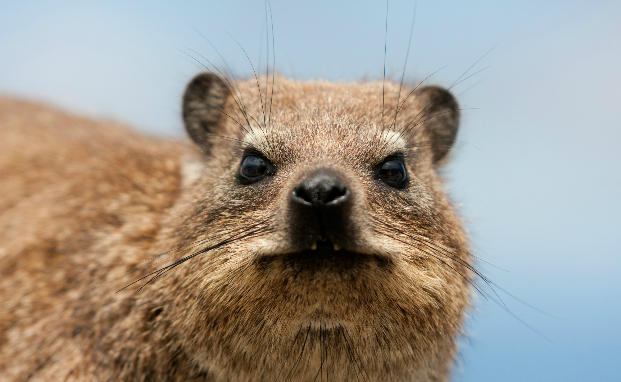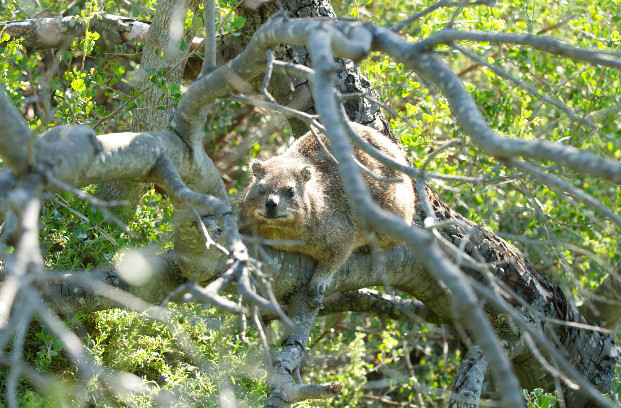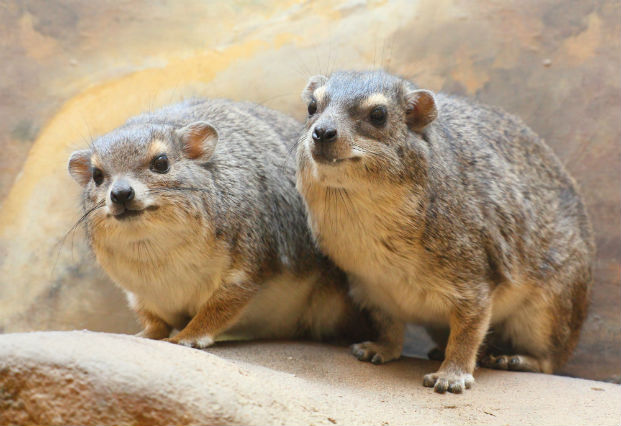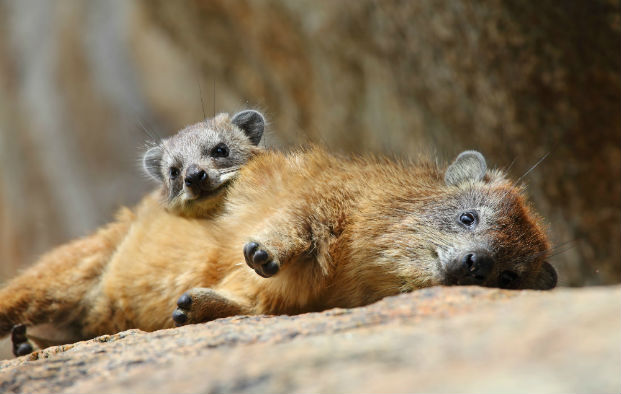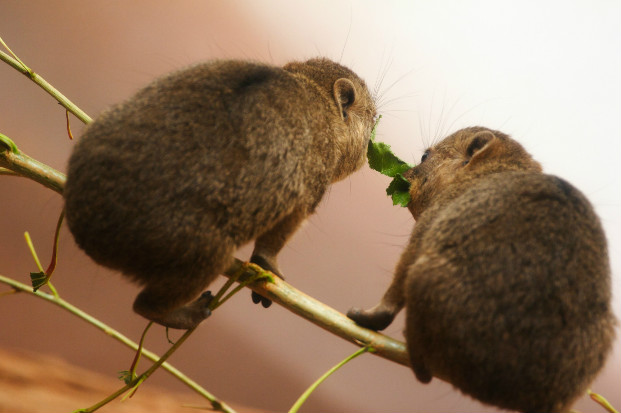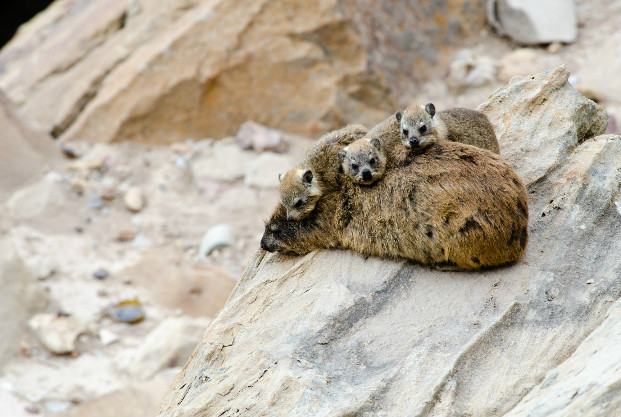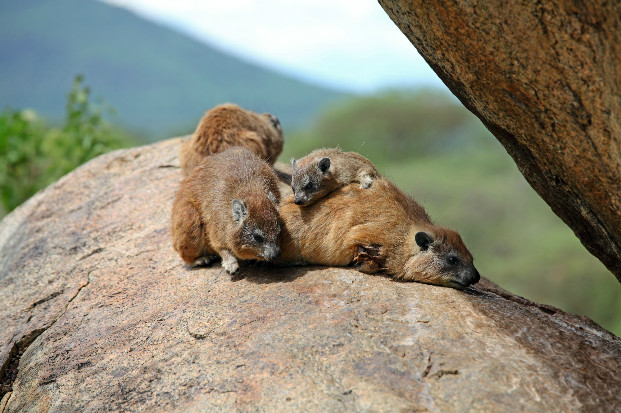Vote for the fact you find most fascinating
The soles of a rock dassie’s feet are soft and rubbery, they are kept moist by glandular tissue which assists them with their grip as they move around the smooth rocks.
During the night rock dassies will lie on top of each other to keep warm. This behaviour is called “heaping”.
Rock dassies only eat for 1 hour of the day, this is all the time they need because each bite of food that they take is the same size as a bite that a sheep would take.
Rock dassies have a glandular spot on their backs which is covered by longer hair than elsewhere. In times of excitement the hair is raised and the gland opens.
The rock dassie has two upper incisor teeth which, like the elephants, grow for life. In males these are triangular (females are rounded) and very sharp.
There is fossil evidence that the rock dassie is closely related to elephants, the similarities which they share today include: a protracted gestation period, tusk like incisors and their foot structure.
To avoid predators and save energy rock dassies only feed, move around and interact for 5% of the day, the rest of the time they do nothing.
The rock dassie has modified eyes which allow it to look directly into the sun whilst it keeps watch for its chief predator, the Veraux’s eagle. This shield like adaptation is called an “unbraculum”.

